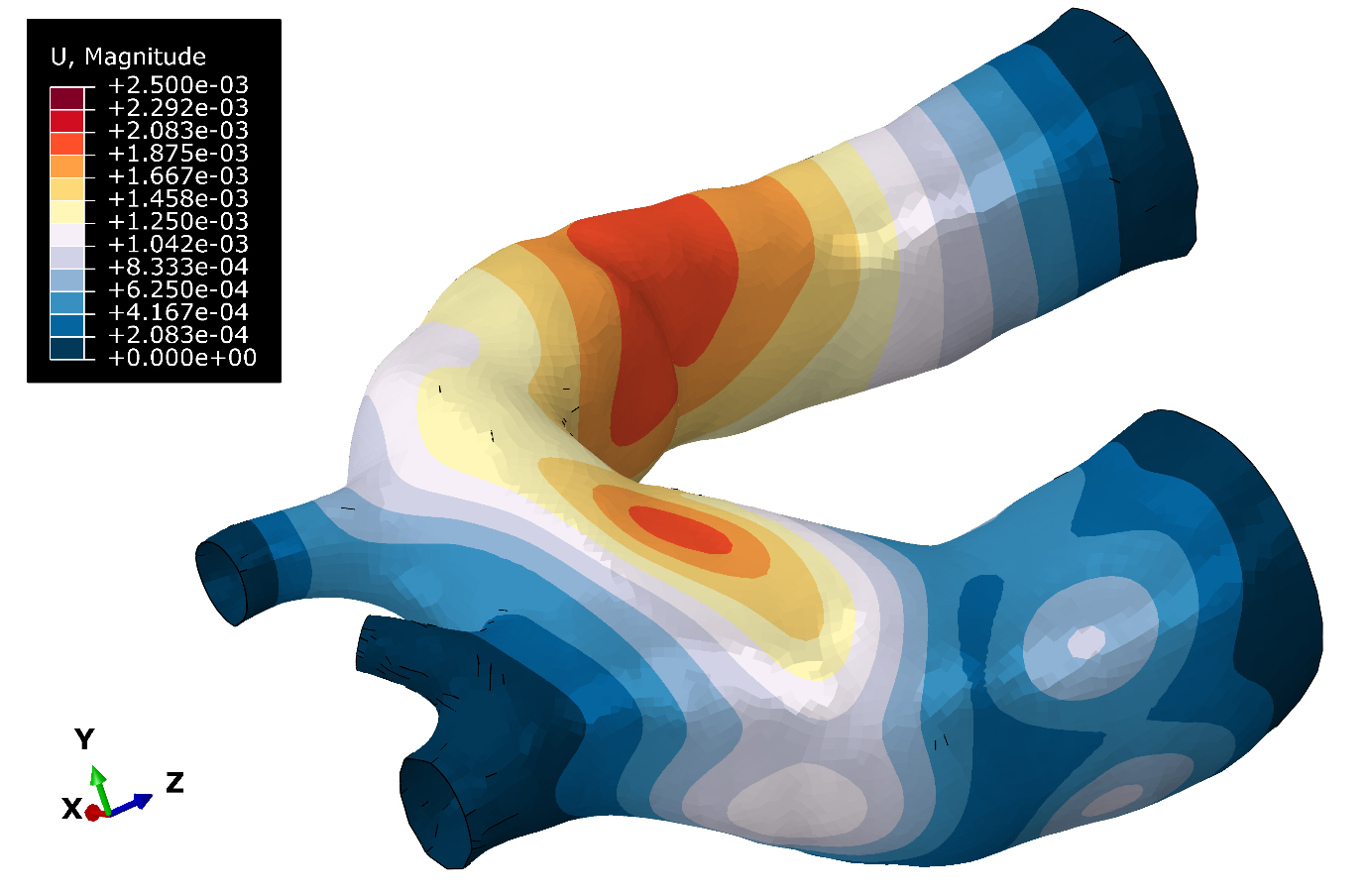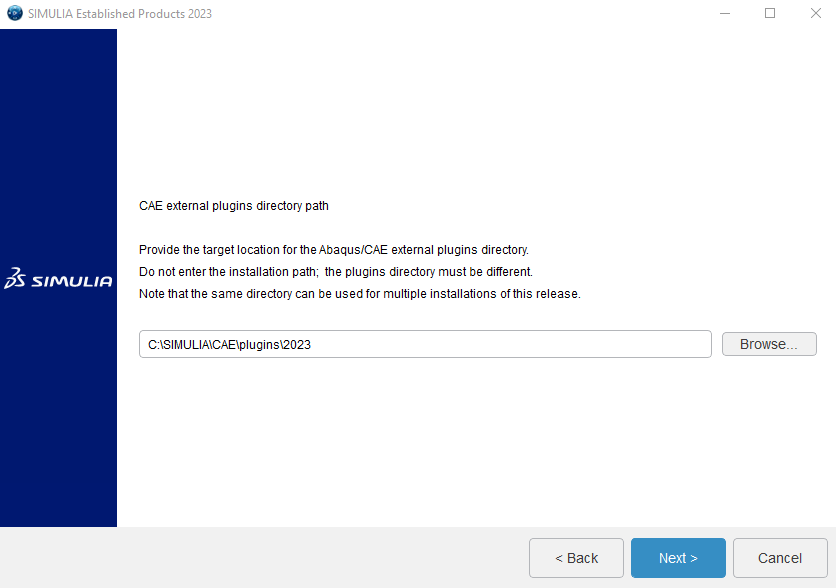This guest blog is written by Miguel Herraez, founder of TecnoDigital School and developer of the software Viper (amongst many of his accolades). Read his full bio!
1. Introduction
Finite element analysis (FEA) is a powerful tool for simulating the behavior of structures and systems under different loads and conditions. Abaqus is a widely-used software package for FEA, and it can be used to perform a wide range of simulations: static and dynamic analyses, fatigue assessment, progressive damage analyses of materials and structures, design optimization... However, the process of setting up and running an Abaqus simulation can be time-consuming and error-prone, especially when performing complex simulations or parametric studies.
One way to overcome these challenges is by using Python scripts in Abaqus, which greatly improves the efficiency and accuracy of FEA simulations. In this article, we will discuss the advantages of using Python scripts in Abaqus for finite element analyses compared to doing it manually and explain the impact of using Python scripts in the numerical simulation pipeline.
2. The basis of Abaqus Scripting
The first question that may come to our mind is: what's a Python script?
A Python script is a text file that contains commands using Python syntax (variables, loops, conditions, functions...). By means of this file, we can tell Abaqus what it has to do: the diameter of the holes in our FE model, the element size of the mesh, the odb file that will be opened to read some force, etc.
The easiest way to execute a Python script in Abaqus is from CAE, by going to: File > Run Script, and then select the Python script. Abaqus will start reading and executing the commands from that Python file. You can download and try this script yourself in Abaqus/CAE.
3. What can Abaqus Scripting do for us?
From my experience there are 3 main advantages of using Python scripts in Abaqus compared to doing it manually:
i. Automation: save lots of time and avoid mistakes
The main advantage of using Python in Abaqus is automation. Python scripts can be used to automate repetitive tasks and streamline workflows. For example, a Python script can be used to run a series of simulations with different parameters, and to collect and analyze results. This can save time and reduce the risk of errors, making it easier to perform large-scale simulations or parametric studies.
Python scripts enable the automation of every stage in the finite element analysis workflow, not only the pre-processing, but also the post-processing and even more sophisticated tasks like iterative optimization processes.
Python scripts enable the development and analysis of complex models.
ii. Flexibility: advanced functionality
One major advantage of using Python scripts in Abaqus is increased flexibility. Python is a highly versatile programming language, and it can be used to customize and automate all aspects of Abaqus simulations, including functionalities that may not be available through the standard user interface (Abaqus/CAE).
For example, Python scripts can be used to create custom input files, generate boundary conditions, and post-process results that are exported into Excel format. This allows users to easily tailor their simulations to specific needs, and to quickly test different scenarios. Not to mention the powerful combination of Python scripts with user subroutines.
We can also develop our own plug-ins for Abaqus/CAE based on Python scripts. These plug-ins are commonly used to automate repetitive tasks for both the pre-process and post-process.
iii. Python and documentation
Additionally, Python is an open-source programming language, which means that it is free to use and has a huge community of developers that contribute to its development and maintenance. Some more advantages of using Python over other languages are simplicity, ease of debugging (interpreted language), ease of integration with other languages (e.g., C, Fortran), modular packages system, variety of frameworks (e.g., web, scientific), most APIs are developed in Python...
On the other hand, the documentation supplied by Abaqus for Python scripting is extremely detailed and very clear, so it will solve any questions and doubts that appear along the way
4. Real application cases
I started to use Abaqus in 2013 at the beginning of my PhD. The goal of my research was to develop FE models to understand some of the damage mechanisms of fiber-reinforced composites at the microscale. However, these models were quite complex.
i. My first model using Abaqus Scripting
These models had so many features that creating them manually would take forever. Imagine that a single model contains more than one thousand fibers!
In the literature, there were many references to this topic and many other people had developed similar FE models using Abaqus. So, the question was: how had they done it?
The answer came from my PhD advisor. He showed me that we could control Abaqus by means of Python scripts, so that the creation of the model could be automated by taking advantage of loops, functions, etc. A few days later, I had made a script that was able to generate the geometry of a model with hundreds of fibers!
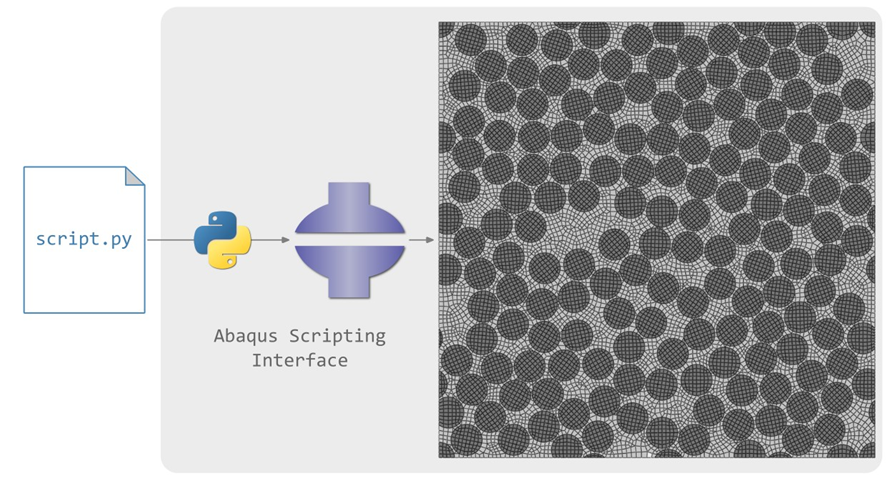
An FE model of a microstructure with more than one hundred fibers takes around 1 minute to be generated by the Python script in Abaqus automatically.
The first step was done! I was very excited about it, but there were some more things missing such as including cohesive elements in between every fiber and the surrounding matrix, defining periodic boundary conditions along the edges of the model…
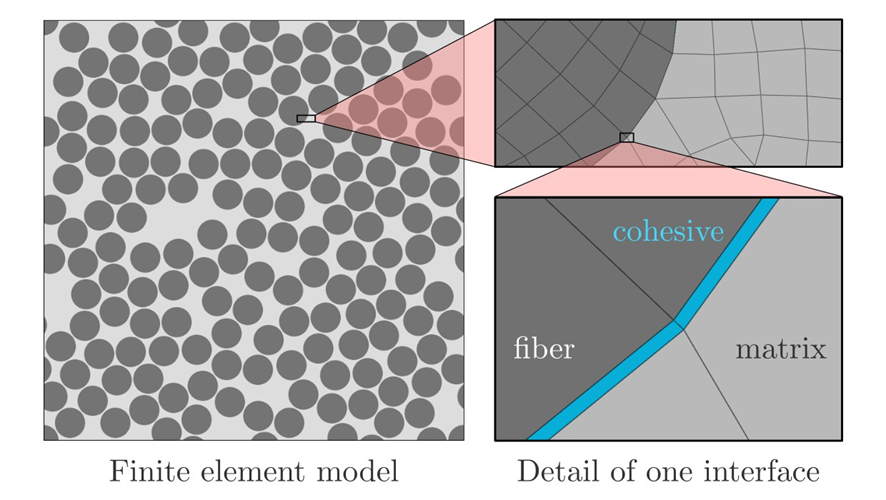
A layer of cohesive elements is inserted around every fiber. If done manually, this is a daunting task. With our Python script it is the same sequence of operations repeated automatically for each fiber.
After some time and lots of trials, searching, reading, debugging and testing, I was able to include every detail in this FE model by using Abaqus scripting. A full 2D model with more than 1500 fibers was created in 10 minutes on my workstation.
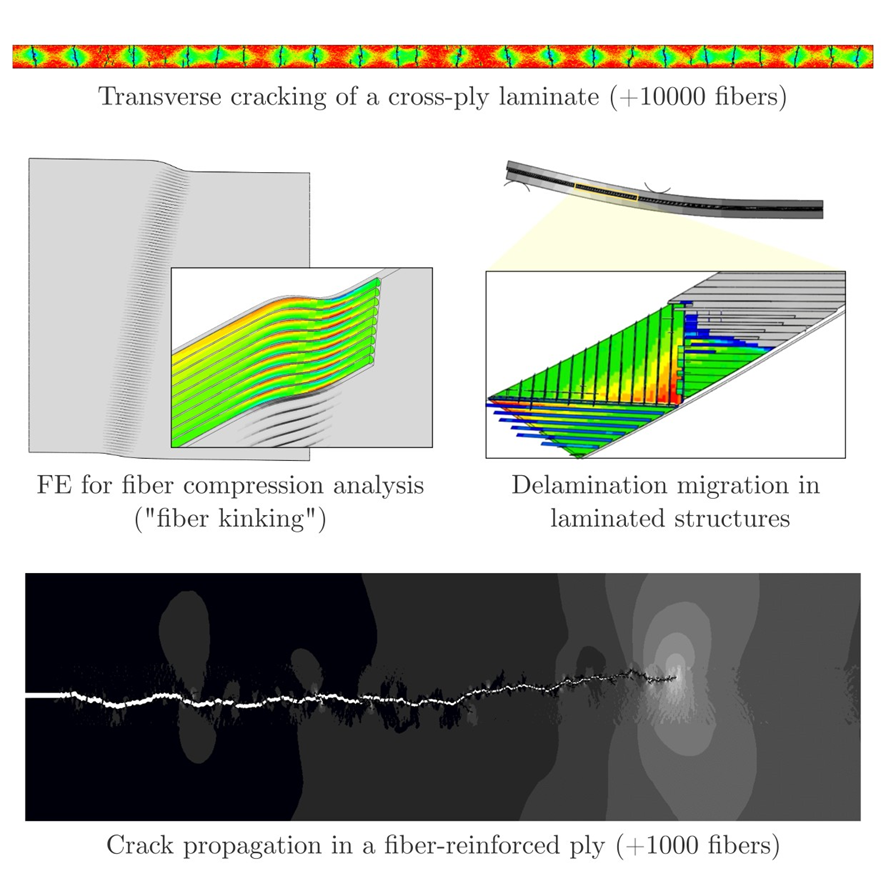
Python scripts allow us to develop any type of FE models in Abaqus and perform analysis regardless of their complexity.
Many more FE models and analyses followed afterwards.
I even had the chance to work at NASA Langley developing this kind of model during my PhD.
ii. A new world of opportunities
While developing the Python scripts for micromechanical models I realized that the post-processing could be automated as well!
That opened a whole new world of analysis and possibilities. Instead of reading results from one odb every time, I could apply the same workflow within a loop and read as many odbs as I needed. I remember that I ran a parametric study across several variables in which I had to extract stiffness and strength from more than 500 odbs! Guess how long this would take to do manually assuming we don’t make any mistake either…
iii. There is no limit using Abaqus Scripting
By applying this philosophy, I could concatenate all these operations and speed up all my FE analyses saving countless hours and enabling very high-fidelity models. Not to mention the astounding opportunities for iterative optimization workflows and the combination with user subroutines.
Most of my work was devoted to composite materials and aerostructure applications. But Abaqus Scripting is applicable to any type of models like concrete structures, metal components, automotive applications, sporting goods, medical devices, turbomachinery, impact assessment, electronics, coupled thermo-mechanical analyses, fatigue analyses, etc.
5. Summary
To summarize, there are many advantages to using Python scripts in Abaqus for finite element analysis, including increased flexibility, automation, and access to advanced functionality. The combination of Abaqus and Python enables the development of any simulation and workflow that you can imagine. Overall, the use of Python in Abaqus greatly improves the efficiency and accuracy of your FEA simulations.






